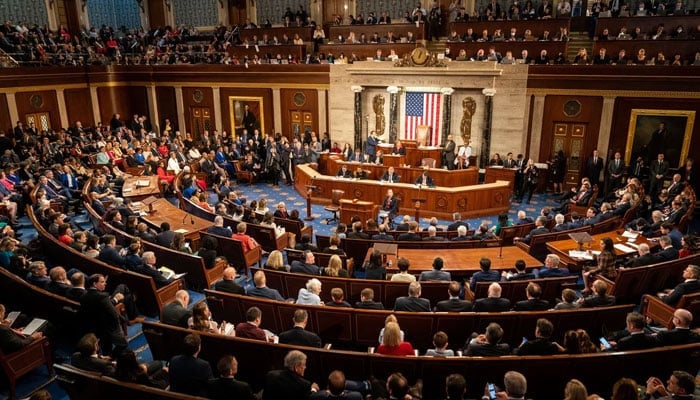Table of Contents
ToggleThe Structure and Function of Congress
Before diving into current events, it’s essential to understand the structure and function of Congress. The House of Representatives, with its 435 members, is designed to represent the population, with members serving two-year terms. The Senate, on the other hand, consists of 100 members, two from each state, serving six-year terms. This bicameral system ensures a balance between representation based on population and equal representation of states.
Congress is tasked with a variety of responsibilities, including making laws, declaring war, regulating commerce, and overseeing the executive branch. However, the effectiveness of Congress can fluctuate based on political dynamics, public sentiment, and various external factors.
Recent Developments in Congress
Legislative Priorities in 2024
As of 2024, Congress has focused on several pressing issues, including economic recovery, healthcare reform, climate change, and national security. The aftermath of the COVID-19 pandemic continues to influence policy discussions, with lawmakers emphasizing the need for robust economic recovery plans.
1. Economic Recovery and Infrastructure: The bipartisan infrastructure bill passed in 2021 laid the groundwork for significant investments in transportation, broadband, and energy. In 2024, Congress is working on additional economic measures aimed at addressing inflation and fostering job growth. Key debates revolve around how to finance these initiatives, with differing opinions on taxation and government spending.
2. Healthcare Reform: Healthcare remains a contentious topic, especially following the pandemic. Congress is currently discussing measures to expand access to affordable healthcare, lower prescription drug prices, and address disparities in healthcare outcomes. Legislative efforts are focusing on strengthening the Affordable Care Act and exploring options for universal healthcare coverage.
3. Climate Change Initiatives: In response to growing concerns about climate change, Congress is prioritizing legislation that addresses environmental sustainability. Recent proposals include incentives for renewable energy development, regulations on carbon emissions, and support for climate-resilient infrastructure. These initiatives aim to meet international climate commitments while balancing economic growth.
4. National Security and Foreign Relations: National security continues to be a central focus, particularly in light of rising tensions with countries like China and Russia. Congress is engaged in debates over defense spending, cybersecurity, and international diplomacy. Recent discussions include re-evaluating military aid and strategic partnerships, reflecting a nuanced approach to global relations.
The Role of Partisanship
Partisanship is an enduring feature of Congress, significantly affecting legislative outcomes. The 2024 session has been marked by intense polarization, with Democrats and Republicans often divided on key issues. The close margins in both the House and Senate exacerbate this division, making bipartisan cooperation challenging.
In recent months, several high-profile legislative efforts have stalled due to partisan gridlock. Issues like immigration reform, gun control, and voting rights have sparked contentious debates, with each party advocating for its vision while resisting compromise. This polarization has not only hindered progress on significant legislation but also fueled public frustration with Congress as an institution.
Public Engagement and Transparency
The Importance of Civic Participation
As Congress navigates these complex issues, public engagement plays a crucial role in shaping legislative outcomes. Civic participation—through grassroots movements, town hall meetings, and advocacy organizations—remains vital in holding elected officials accountable and ensuring that diverse perspectives are considered in policy discussions.
In 2024, a renewed emphasis on transparency is evident, with many lawmakers utilizing social media and digital platforms to connect with constituents. Live-streamed committee hearings, virtual town halls, and online polls enable citizens to engage more directly with their representatives. This shift towards greater accessibility is encouraging a more informed electorate, which can influence sdnational.com actions.
Challenges of Misinformation
However, the proliferation of misinformation poses a significant challenge to informed public engagement. Social media platforms often disseminate false or misleading information, complicating efforts to foster productive dialogue on critical issues. Congress has recognized the need to combat misinformation, with discussions around regulatory measures targeting digital platforms.
Lawmakers are exploring partnerships with tech companies to promote media literacy and ensure that accurate information reaches the public. These initiatives aim to empower citizens to discern credible news sources, ultimately fostering a healthier democratic discourse.
The Future of Congress
Evolving Legislative Strategies
Looking ahead, the future of Congress will likely be shaped by a combination of political dynamics, societal changes, and global challenges. As new issues emerge—such as the impact of artificial intelligence, immigration reform, and social justice—Congress will need to adapt its legislative strategies to effectively address these complexities.
1. Bipartisan Cooperation: Despite current partisanship, there is a growing recognition that addressing the nation’s most pressing challenges will require bipartisan cooperation. As public frustration with gridlock mounts, there may be increased pressure on lawmakers to find common ground. Collaborative efforts on infrastructure, healthcare, and climate change could pave the way for more constructive policymaking.
2. Focus on Accountability: Public demand for accountability is likely to influence congressional actions. As constituents become more engaged, lawmakers may prioritize transparency and responsiveness to foster trust in the institution. This could manifest in more rigorous oversight of government programs and a commitment to ethical standards.
3. Embracing Technological Advancements: The integration of technology into legislative processes will continue to evolve. Innovations in data analysis, communication, and remote voting may streamline operations and enhance efficiency. Embracing these advancements could lead to a more agile Congress capable of responding swiftly to emerging issues.
Conclusion
As we navigate the complexities of 2024, the dynamics of Congress remain at the forefront of American governance. With pressing issues demanding attention, the legislative body faces the dual challenge of fostering bipartisan cooperation while addressing public concerns about accountability and transparency. The evolving political landscape, shaped by civic engagement and technological advancements, will ultimately determine Congress’s effectiveness in meeting the needs of the American people. In this critical juncture, the role of Congress as a representative institution is more essential than ever, emphasizing the importance of informed citizen participation in shaping the future of our democracy.





